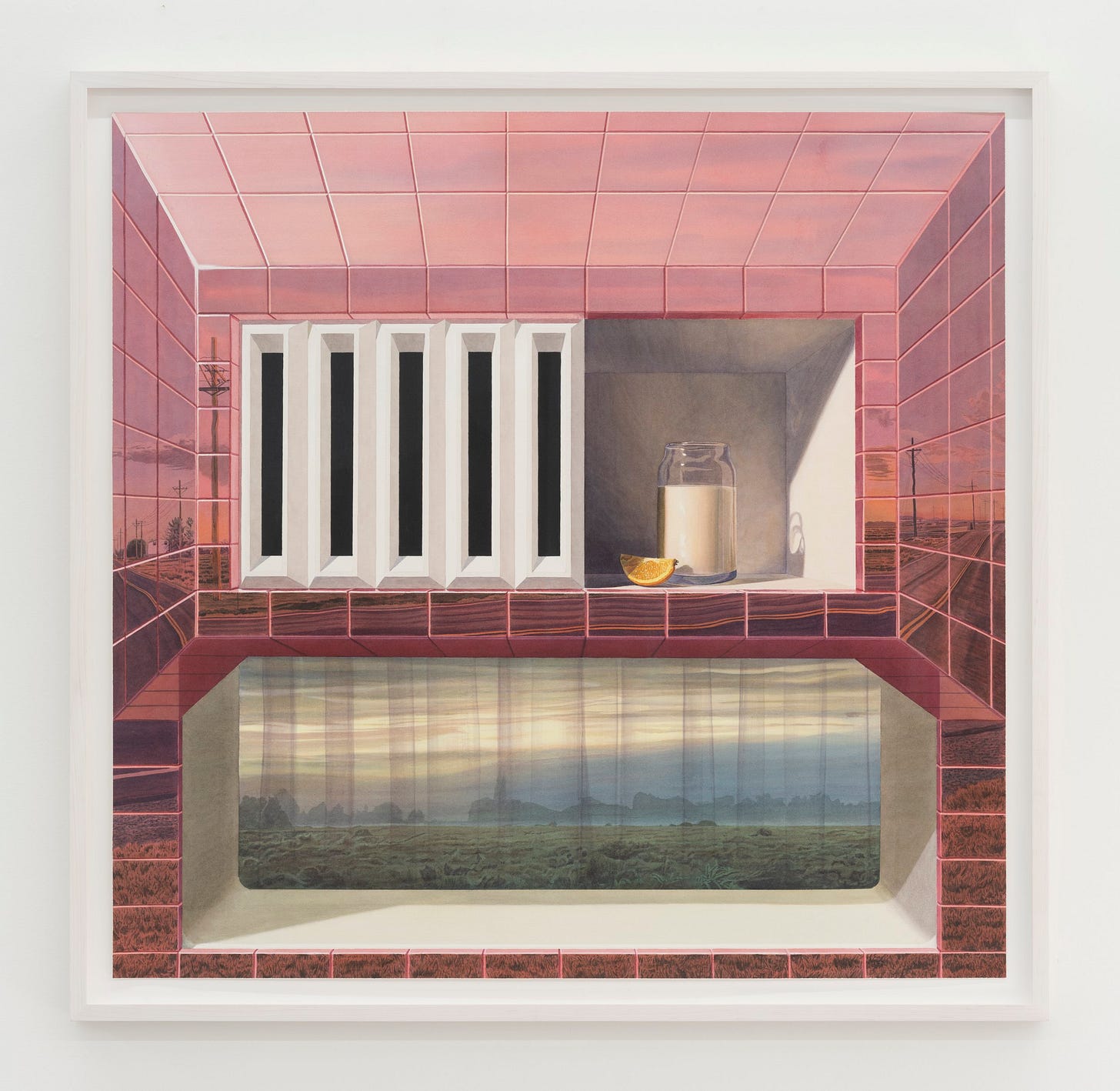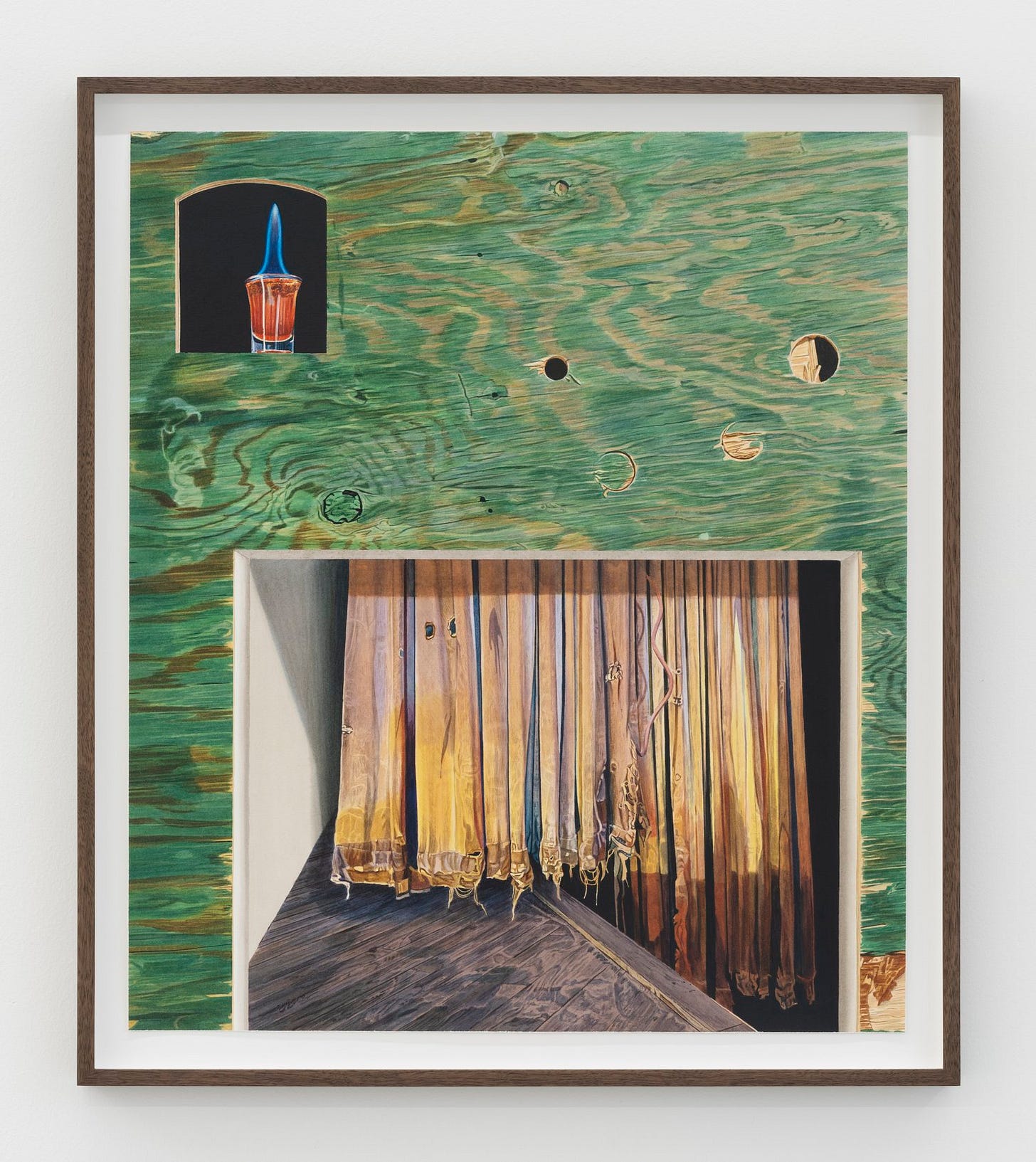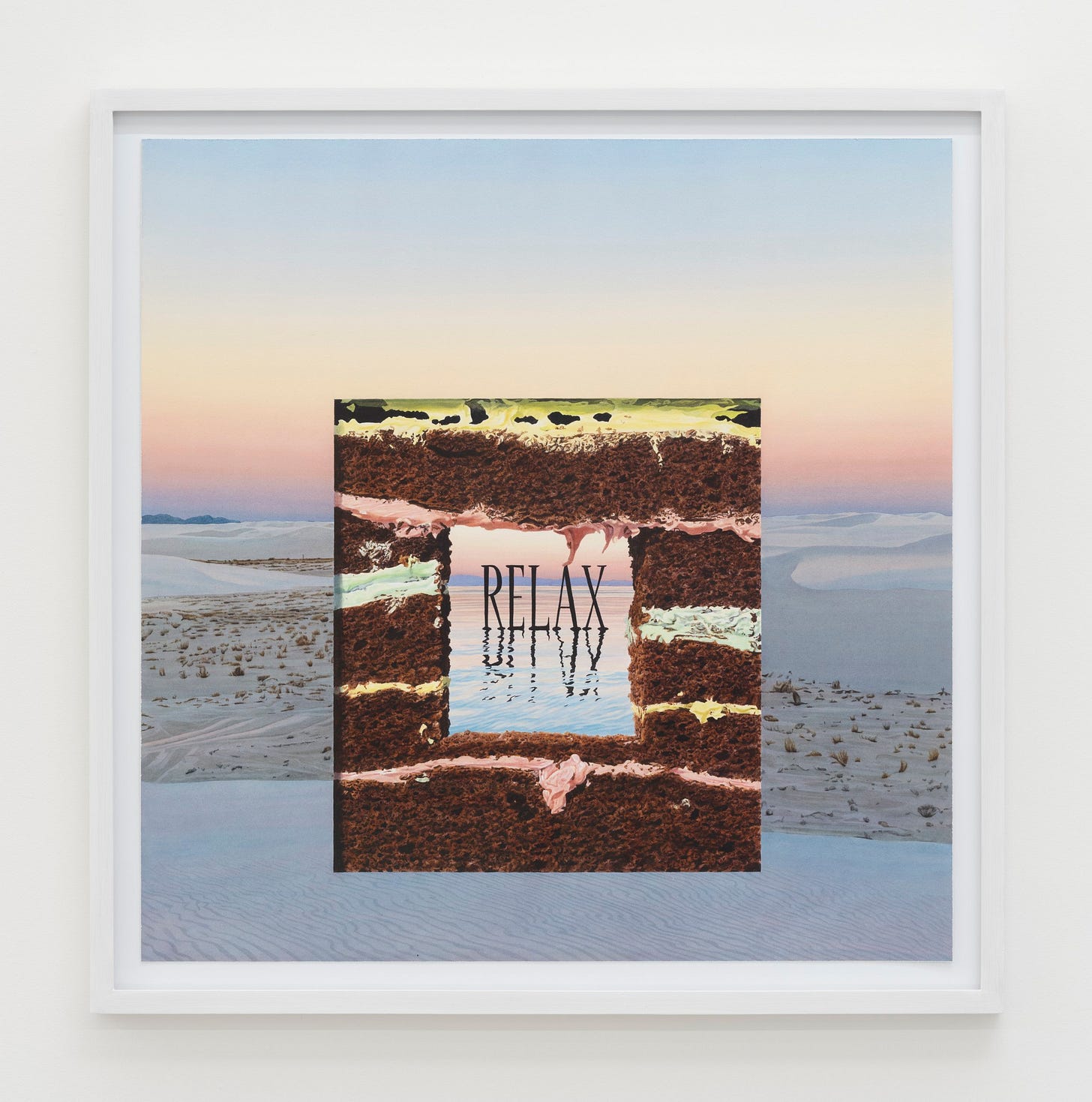High Art Brainrot
Waltzing through the absurd with Tristram Lansdowne’s watercolours.
Tristram Lansdowne [link]
Well Weather Window
Galerie Nicolas Robert [link]
3 May - 7 June, 2025
images courtesy of the gallery
✎
You read it correctly — that thing is a watercolour.
✎
“I sometimes use [Photoshop], but I’d prefer not to anymore — it solves too many problems for me.” Lansdowne’s response to a question about how he maps out his paintings. He motioned to Supply Line Shrine, above, as an example of a piece he didn’t use Photoshop to plan. It’s one of the best paintings in the show and clearly the crowd favourite. I somehow doubt that’s a coincidence.
✎
Given the technical difficulty of these works, you’d think some problem solving assistance would be welcomed by the artist. But his response speaks to the importance of ambiguity in these paintings. To go a bit meta, the difficulty in making them feels worthy of the impossible task of unearthing why one is compelled to make them. I’m conscious of not puncturing that mystery with too precise of language.
✎
I wrote in this letter about a meditation I do often: letting my eyes fall on whatever they find interesting and mentally noting its details. Unwittingly, it has helped me recognize what piques my visual interest. My eyes reach for moments of contrast and dividing lines. I find enclosures for objects and enjoy when they feel correctly stowed away. A chatbot could surely explain the compositional theory behind this, but satisfaction from a quick answer has been on the decline since the advent of SEO articles. Not knowing is fabulous.
✎
What do we spend the majority of our hours looking at? The blackness behind closed eyelids, technically. But our eyes don’t tolerate that abyss for long; our brains fill the emptiness with sights and sounds. I wake up and hurriedly jot my dreams into bullet points, snapping the journal shut before my day-mind can attack it with conclusions. There is sufficient wonder in documenting whatever my subconscious happened upon.
✎
Remember typing questions into AskJeeves? Who was Jeeves and why did we trust him? Did anyone use Quora?
✎
After closed eyelids, the next majority share of my looking hours is donated to the computer screen. Feeding the pixels is a universe somehow more incomprehensible than the contents of dreams, for dreams are constrained to one brain left to its weirdness. Each browser tab, conversely, is a portal into every curiosity that infects every brain, and nowadays, if the portal falls short we can produce our desires with a quick prompt.
✎
This digital madness demands order. To not use folder structures, stratified playlists, spreadsheet grids, bookmarks, is to flirt with insanity. A desktop screen with misc files floating around like landmines is enough to rupture my overstimulated brain. But equally absurd are my attempts to manage the overload. Saved posts, linked essays, ToDo lists, photo albums. Boxes dragged into other boxes. I no longer remember where items in some containers came from, or the path I followed to discover them. I could spend an entire lifetime pruning this web of hyperconnectivity. It’s disturbing, but it’s also wonderful. Many of the things I have come across will stay with me forever. In a sea of sensory excess, a handful of items hold steady like still life paintings, weathering the currents.
✎
Maybe the ideas above are what Lansdowne is capturing in these paintings.
✎
Liu Cixin’s Dark Forest Theory of the Universe. Walking through a forest at night, its silence and darkness could be mistaken for emptiness; in reality it is teeming with wildlife on the lookout for predators. Expanding this to the universe: we see no activity because civilizations who are advanced enough to know anything know better than to reveal themselves. Yancey Strickler applies this concept to The Dark Forest of the Internet: the enshittification and downright danger of mainstream platforms has us retreating to decentralized “dark forests”: newsletters, OnlyFans, discord channels, private profiles, etc. Major platforms are the most exposed pathway through. You see what you need and cut off into darkness, to safety.
✎
This model returns a sense of wonder to being online. The idea of trudging through a mysterious place not basking in gross fluorescent light, where people are not chasing you down for a fraction of your attention. You stumble across communities powered by genuine mutual interest. In theory, they become close-knit enough to — wait for it — meet up in real life. The darkest of all forests occurs when we’ve logged off. In the meantime, while searching, you step through doorways, frames leading to other frames, sniffing towards your niche. Eventually you arrive at whatever was calling you: a moldy orange, a New Mexico landscape, a patch of ermine fur.
✎
Taking great pains to uncover your interests is a process inherent to art, but as you know by now, I believe the mysterious forces which propel art could be incorporated into so much more.
✎
Maybe the ideas above are what Lansdowne is capturing in his paintings.
✎
I so love the fear, upon pressing send, that every word I’ve written has nothing to do with what Landsowne is capturing in his paintings. The art became a receptacle for my current diet of abstract internet baggage, but at least the result was my own excavation. I trust it more than answers scooped from external sources, including the artist himself.
✎
As we purge the world of every mystery, the choice to live in the not-knowing, to commit to unproductive searching, becomes an act of luxury. Artists have long been acclimated to the unknown. As the forest darkens, they briefly flash a guiding beacon.







